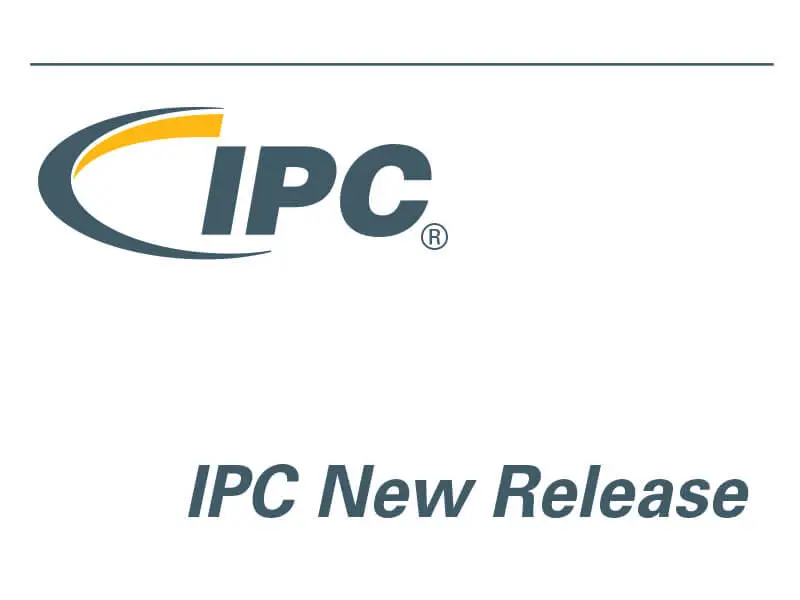IPC-A-600J Acceptability of Printed Boards, the definitive illustrated guide to printed board acceptability! This four-color document provides photographs and illustrations of the target, acceptable and nonconforming conditions that are either internally or externally observable on bare printed boards. Make sure your operators, inspectors, and engineers have the most current industry consensus information. With 120 new or revised photographs and illustrations, revision J provides new coverage on topics such as microvia contact dimensions, plating, voiding and fill, along with updated and expanded coverage for dielectric removal (etchback, smear and wicking), plating folds, surface plating for edge connectors, SMT and BGA pads, marking, hole registration, delamination, cap plating, via fill and flexible circuits. The document synchronizes to the acceptability requirements expressed in IPC-6012D and IPC-6013C. Number of pages: 180. Released May 2016.
IPC-A-600J Acceptability of Printed Boards
Scope
This IPC-A-600J document describes the target, acceptable, and nonconforming conditions that are either externally or internally observable on printed boards. It represents the visual interpretation of minimum requirements set forth in various printed board specifications, e.g.; IPC-6010 series, J-STD-003, etc.Purpose
The visual illustrations in this IPC-A-600J document portray specific criteria of the requirements of current IPC specifications. In order to properly apply and use the content of this document, the printed board should comply with the design requirements of the applicable IPC-2220 series document and the performance requirements of the applicable IPC-6010 series document. In the event the printed board does not comply with these or equivalent requirements, then the acceptance criteria should be as agreed between user and supplier (AABUS).Approach to this document
Characteristics are divided into two general groups: Externally Observable & Internally Observable‘‘Externally observable’’ conditions are those features or imperfections which can be seen and evaluated on or from the exterior surface of the board. In some cases, such as voids or blisters, the actual condition is an internal phenomenon and is detectable from the exterior.
‘‘Internally observable’’ conditions are those features or imperfections that require microsectioning of the specimen or other forms of conditioning for detection and evaluation. In some cases, these features may be visible from the exterior and require microsectioning in order to assess acceptability requirements. Specimens should be illuminated during evaluation to the extent needed for effective examination. The illumination should be such that no shadow falls on the area of interest except those shadows caused by the specimen itself. It is recommended that polarization and/or dark field illumination be employed to prevent glare during the examination of highly reflective materials. The illustrations in this document portray specific criteria relating to the heading and subheading of each page, with brief descriptions of the acceptable and nonconforming conditions for each product class. (See 1.4.) The visual quality acceptance criteria are intended to provide proper tools for the evaluation of visual anomalies. The illustrations and photographs in each situation are related to specific requirements. The characteristics addressed are those that can be evaluated by visual observation and/or measurement
of visually observable features. Supported by appropriate user requirements, this document should provide effective visual criteria to quality assurance and manufacturing personnel.This IPC-A-600J document cannot cover all of the reliability concerns encountered in the printed board industry; therefore, attributes not addressed in this issue shall be AABUS. The value of this document lies in its use as a baseline document that may be modified by expansions, exceptions, and variations which may be appropriate for specific applications. When making accept and/or reject decisions, the awareness of documentation precedence must be maintained. This document is a tool for observing how a product may deviate due to variation in processes. Refer to IPC-9191. IPC-A-600 provides a useful tool for understanding and interpreting Automated Inspection Technology (AIT) results. AIT may be applicable to the evaluation of many of the dimensional characteristics illustrated in this document.
Classification
This standard recognizes that electrical and electronic products are subject to classifications by intended end-item use. Three general end-product classes have been established to reflect differences in producibility, complexity, functional performance requirements, and verification (inspection/test) frequency. It should be recognized that there may be overlaps of product between classes.Process Indicator imperfections are permitted and are deliverable.
Preview the table of contents .pdf file.
Developed by the IPC-A-600 Task Group (7-31a) of the Product Assurance Committee (7-30) of IPC. Users of this publication are encouraged to participate in the development of future revisions. Supersedes: IPC-A-600H – April 2010 / IPC-A-600G – July 2004 / IPC-A-600F – November 1999

